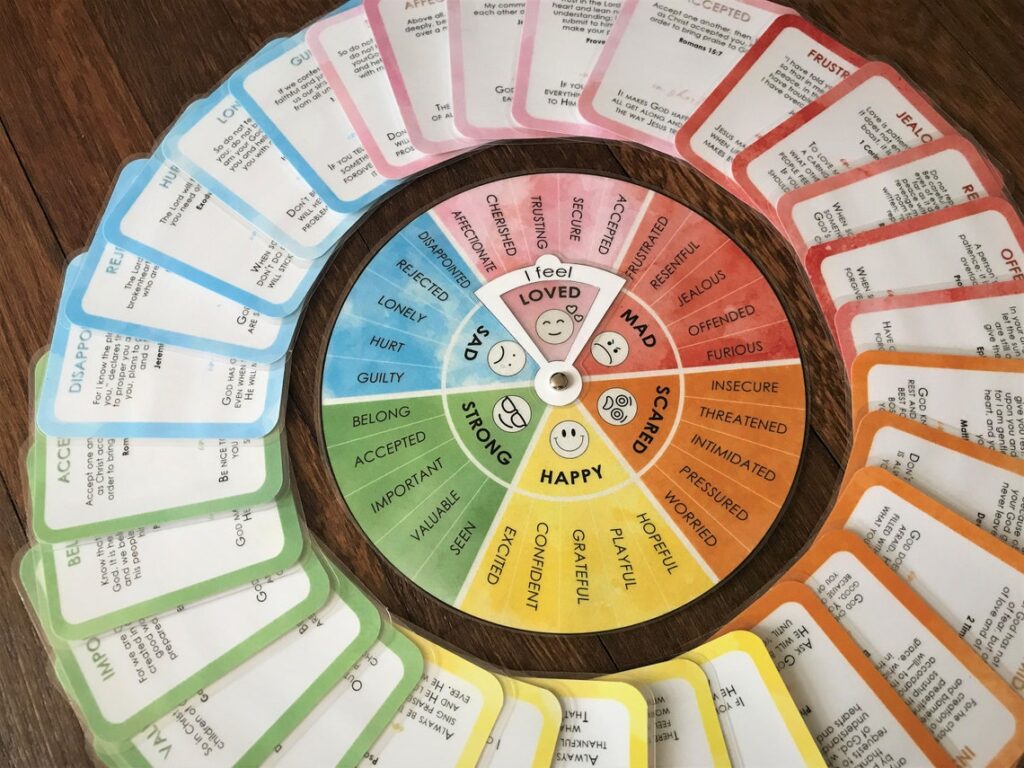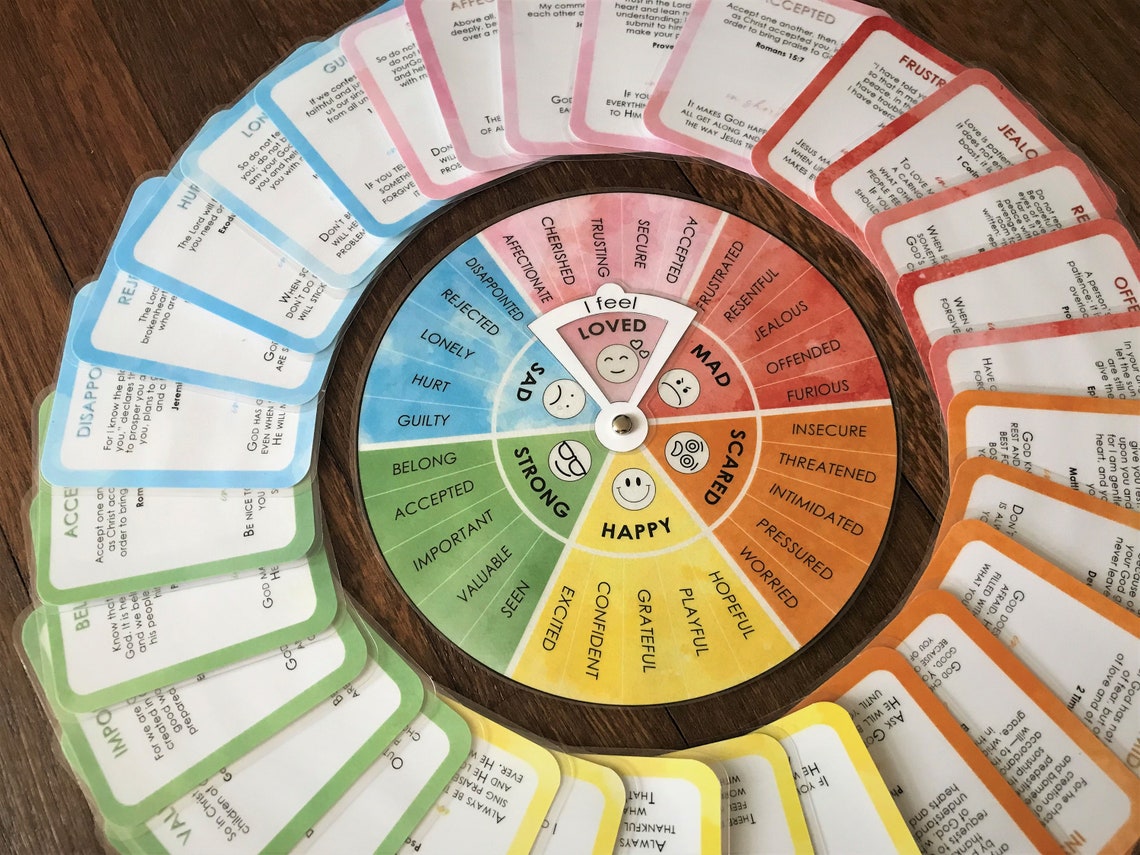
Unlocking Emotional Intelligence: A Deep Dive into the Feelings Wheel
In an increasingly complex world, understanding and managing our emotions, as well as those of others, has become paramount. Emotional intelligence (EQ) plays a crucial role in personal and professional success. One powerful tool for enhancing emotional awareness is the feelings wheel. This article will explore the feelings wheel, its origins, how it works, and its practical applications in various aspects of life.
What is the Feelings Wheel?
The feelings wheel, also known as the emotion wheel, is a visual tool designed to help individuals identify and articulate their emotions more accurately. It typically consists of concentric circles, with basic emotions at the center and more nuanced emotions radiating outwards. The feelings wheel is a relatively modern tool, but its roots lie in the work of emotion theorists like Robert Plutchik, who developed his own wheel of emotions in the 1980s.
The most commonly used feelings wheel is attributed to Dr. Gloria Willcox. Her version presents six core emotions at the center: happy, sad, angry, surprised, scared, and bad. Moving outward, each of these emotions branches into more specific feelings. For example, “happy” might lead to “joyful,” “content,” or “optimistic.” This structure allows users to move from a general sense of how they feel to a more precise understanding of their emotional state. The feelings wheel serves as a valuable resource for individuals seeking to improve their self-awareness and emotional vocabulary.
The History and Development of the Feelings Wheel
While the concept of categorizing and visualizing emotions has been around for decades, the modern feelings wheel we recognize today has evolved over time. Robert Plutchik’s wheel of emotions, which features eight basic emotions arranged in opposing pairs, laid the groundwork for understanding the complexities of emotional experience. Plutchik’s model emphasized the evolutionary significance of emotions and their role in survival.
Dr. Gloria Willcox’s feelings wheel built upon this foundation by providing a more accessible and user-friendly tool for identifying and expressing emotions. Her wheel’s simple design and clear categorization made it popular among therapists, educators, and individuals seeking to improve their emotional literacy. Other variations of the feelings wheel exist, each with its own nuances and focus. Some wheels incorporate physiological sensations associated with emotions, while others emphasize the cognitive aspects of emotional experience.
How the Feelings Wheel Works
The feelings wheel operates on a simple yet effective principle: by providing a visual representation of emotions, it helps individuals connect with their feelings and find the right words to describe them. The process typically involves starting with the core emotions at the center of the wheel and then moving outward to explore more specific feelings. For example, if someone is feeling “bad,” they might then consider whether they are feeling “guilty,” “ashamed,” or “lonely.”
The feelings wheel can be used in various ways. Some people use it as a daily check-in tool to assess their emotional state. Others use it in therapy sessions to help them communicate their feelings to their therapist. Still others use it as a tool for self-reflection and personal growth. The key is to approach the feelings wheel with an open mind and a willingness to explore your emotional landscape.
Benefits of Using the Feelings Wheel
The benefits of using the feelings wheel are numerous and far-reaching. Here are some of the key advantages:
- Improved Emotional Awareness: The feelings wheel helps individuals become more aware of their emotions and how they impact their thoughts and behaviors.
- Enhanced Emotional Vocabulary: By providing a wide range of emotion words, the feelings wheel expands an individual’s emotional vocabulary, making it easier to communicate their feelings to others.
- Better Communication: When individuals can accurately identify and articulate their emotions, they can communicate more effectively in their relationships.
- Reduced Emotional Reactivity: By understanding their emotions, individuals can learn to manage their reactions and respond to situations in a more thoughtful and controlled manner.
- Increased Empathy: The feelings wheel can also help individuals develop empathy for others by allowing them to better understand the emotional experiences of those around them.
- Improved Mental Health: Understanding and expressing emotions is crucial for maintaining good mental health. The feelings wheel can be a valuable tool for promoting emotional well-being.
Practical Applications of the Feelings Wheel
The feelings wheel has a wide range of practical applications in various settings, including:
Therapy and Counseling
Therapists and counselors often use the feelings wheel to help clients identify and process their emotions. It can be particularly helpful for individuals who struggle to articulate their feelings or who have difficulty connecting with their emotions. The feelings wheel provides a structured framework for exploring emotional experiences and can facilitate deeper self-understanding.
Education
The feelings wheel can be used in educational settings to teach children and adolescents about emotions. It can help them develop emotional literacy and learn how to manage their feelings in healthy ways. Educators can use the feelings wheel to create activities that promote emotional awareness and empathy.
Personal Development
Individuals can use the feelings wheel as a tool for personal development and self-reflection. It can help them gain insights into their emotional patterns and identify areas where they may need to grow. By regularly checking in with their emotions using the feelings wheel, individuals can cultivate greater self-awareness and emotional intelligence.
Workplace
The feelings wheel can be used in the workplace to improve communication and build stronger relationships among colleagues. It can help employees understand their own emotions and the emotions of others, leading to more effective teamwork and collaboration. [See also: Conflict Resolution Strategies in the Workplace] The feelings wheel can also be used in leadership training to help managers develop their emotional intelligence and become more effective leaders.
Relationships
Understanding and expressing emotions is crucial for building healthy and fulfilling relationships. The feelings wheel can help couples communicate more effectively and resolve conflicts in a constructive manner. By using the feelings wheel to explore their emotions and the emotions of their partner, couples can deepen their connection and build a stronger foundation for their relationship.
How to Use the Feelings Wheel Effectively
To get the most out of the feelings wheel, it’s important to use it effectively. Here are some tips:
- Start with the Core Emotions: Begin by identifying the core emotion that you are feeling. This will help you narrow down your search and find more specific feelings.
- Explore the Branches: Once you have identified the core emotion, explore the branches that radiate outwards. Consider the nuances of each feeling and how it relates to your experience.
- Be Honest with Yourself: It’s important to be honest with yourself about how you are feeling. Don’t be afraid to acknowledge difficult or uncomfortable emotions.
- Use it Regularly: The more you use the feelings wheel, the more familiar you will become with your emotions. Make it a regular practice to check in with your feelings and use the feelings wheel to identify and articulate them.
- Combine it with Other Tools: The feelings wheel can be used in conjunction with other tools for emotional awareness, such as journaling, meditation, and therapy.
Criticisms and Limitations of the Feelings Wheel
While the feelings wheel is a valuable tool, it’s important to acknowledge its limitations. Some criticisms include:
- Oversimplification: The feelings wheel can be seen as an oversimplification of the complex and nuanced nature of human emotions.
- Cultural Bias: Some versions of the feelings wheel may be culturally biased, reflecting the emotional norms and values of a particular culture.
- Lack of Context: The feelings wheel does not provide context for emotions. It’s important to consider the circumstances that led to the emotion in order to fully understand it.
- Subjectivity: Emotions are subjective experiences, and the feelings wheel may not accurately capture the unique emotional experiences of every individual.
Despite these limitations, the feelings wheel remains a valuable tool for promoting emotional awareness and communication. By being aware of its limitations and using it in conjunction with other tools, individuals can maximize its benefits.
Conclusion
The feelings wheel is a powerful tool for unlocking emotional intelligence. By providing a visual representation of emotions, it helps individuals identify and articulate their feelings more accurately. The benefits of using the feelings wheel include improved emotional awareness, enhanced emotional vocabulary, better communication, reduced emotional reactivity, increased empathy, and improved mental health. The feelings wheel has practical applications in therapy, education, personal development, the workplace, and relationships. While it has some limitations, the feelings wheel remains a valuable resource for anyone seeking to improve their emotional well-being. Embrace the feelings wheel and start your journey towards greater emotional understanding today. [See also: The Importance of Self-Awareness in Leadership]

